The idea of glowing dinosaurs might seem like something straight out of science fiction, yet recent scientific discoveries suggest this fascinating possibility could be rooted in reality. Paleontologists and evolutionary biologists have been exploring evidence that certain dinosaur species may have possessed bioluminescent capabilities, similar to modern creatures like fireflies and deep-sea fish. This intriguing question intersects paleontology, evolutionary biology, and comparative anatomy, challenging our traditional perception of prehistoric life. The potential for bioluminescence in dinosaurs opens new windows into understanding prehistoric ecosystems, predator-prey dynamics, and dinosaur social behaviors that would have otherwise remained hidden in the darkness of prehistory.
The Science of Bioluminescence in Modern Animals

Bioluminescence is the production and emission of light by living organisms through biochemical processes. In today’s world, this phenomenon occurs in diverse species spanning multiple phyla, from bacteria and fungi to insects, fish, and cephalopods. The chemical reaction typically involves a light-emitting molecule called luciferin and an enzyme called luciferase, which catalyzes the oxidation of luciferin. Different species have independently evolved this ability for various purposes, including attracting mates, luring prey, camouflaging, and warning predators. Understanding how bioluminescence operates in contemporary species provides crucial frameworks for evaluating the possibility of this trait in dinosaurs. Nearly 80% of all bioluminescent organisms exist in marine environments, where this adaptation has evolved independently at least 40 separate times.
Evolutionary Precedent for Bioluminescence

Bioluminescence has a long evolutionary history that predates dinosaurs by millions of years. Fossil evidence suggests that light-producing mechanisms existed in marine organisms as far back as the Cambrian period, roughly 500 million years ago. Given the widespread nature of this adaptation across the animal kingdom, scientists consider it plausible that some dinosaur lineages could have evolved this trait independently. The convergent evolution of bioluminescence in so many unrelated modern species strengthens the case for its potential presence in prehistoric creatures. Dinosaurs occupied nearly every ecological niche during their 165-million-year reign, creating numerous evolutionary opportunities for such adaptations to develop. Paleontologists point out that any trait that has evolved multiple times independently is more likely to have appeared in other lineages as well, including potentially within certain dinosaur clades.
Evidence from Dinosaur Anatomy

While direct evidence of bioluminescence is difficult to preserve in the fossil record, certain anatomical features might hint at this capability in some dinosaur species. Some fossils show unusual structures or cavities that could potentially have housed bioluminescent organs or specialized tissues. For example, certain theropod dinosaurs possessed hollow chambers within their skulls that might have accommodated light-producing tissues or the necessary biochemical components. The nasal cavities and sinus systems of some dinosaurs were particularly complex and contained spaces that remain somewhat mysterious in function. Additionally, some dinosaur species had semi-transparent areas of bone or specialized scales that could have allowed internally generated light to shine through. However, these anatomical features remain speculative as evidence for bioluminescence, as they could have served numerous other biological functions.
Nocturnal Dinosaurs and the Adaptive Advantage
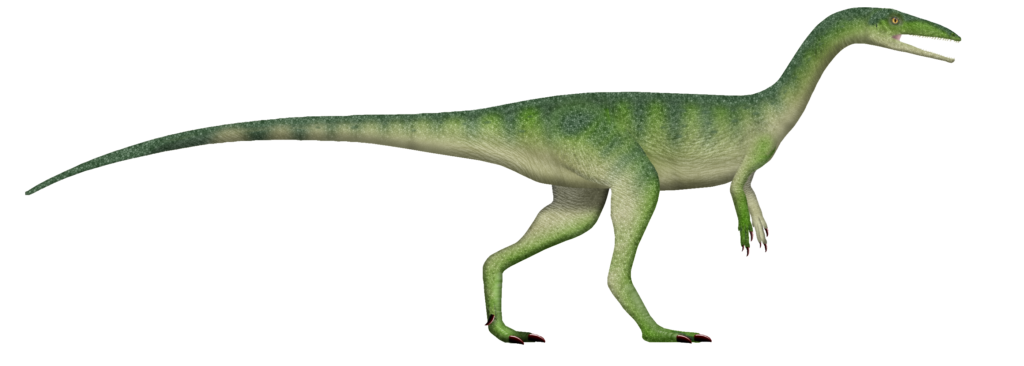
The nocturnal habits of certain dinosaur species provide compelling ecological reasoning for the evolution of bioluminescence. Studies of eye socket size and structure in various dinosaur fossils suggest that some species were adapted for low-light or nighttime activity. For these nocturnal hunters or foragers, the ability to produce light could have conferred significant evolutionary advantages. Bioluminescence might have helped nocturnal dinosaurs navigate dark environments, communicate with others of their species, or even confuse predators. Small therapod dinosaurs, in particular, might have benefited from light-producing capabilities while hunting insects and other small prey at night. Research on dinosaur eye structure, particularly the size of the scleral ring and orbit dimensions, has helped paleontologists identify which species likely had nocturnal habits and thus might have been candidates for evolving bioluminescent features.
Fluorescence vs. Bioluminescence in Dinosaurs
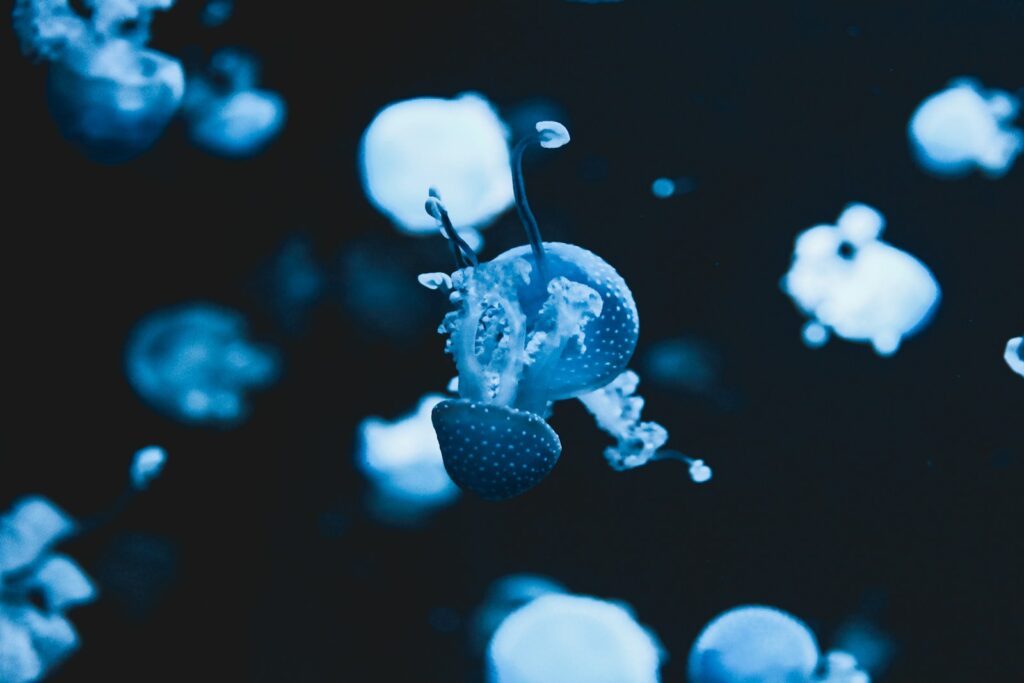
Scientists make an important distinction between fluorescence and bioluminescence when discussing potential light-emitting dinosaurs. Fluorescence involves the absorption and re-emission of light, requiring an external light source, while bioluminescence generates light through internal chemical reactions without external input. Some researchers propose that certain dinosaurs may have had fluorescent features that glowed under ultraviolet light, similar to how modern scorpions fluoresce under UV light. Fluorescent pigments in feathers, scales, or skin could have created stunning displays when exposed to natural UV light at dawn or dusk. This phenomenon would be more properly described as “glowing” rather than actually “glowing in the dark” since it requires external light to function. Evidence for either capability remains speculative, though fluorescence generally requires simpler adaptations and might have been more widespread among dinosaurs.
The Case for a Bioluminescent Microraptor

The microraptor, a small four-winged dinosaur from the Early Cretaceous period, represents one of the more promising candidates for potential bioluminescence. This crow-sized feathered dinosaur possessed iridescent black feathers that paleontologists have studied extensively. Research published in 2012 revealed that the Microraptor’s feathers contained melanosomes (pigment-bearing organelles) arranged in patterns similar to those found in modern birds with iridescent plumage. Some scientists speculate that beyond mere iridescence, these specialized feather structures could potentially have accommodated bioluminescent bacteria or fungi in a symbiotic relationship. The microraptor’s lifestyle as a forest-dwelling predator that likely hunted in low-light conditions would have made bioluminescence particularly advantageous. The dinosaur’s small size and probable nocturnal hunting habits make it an intriguing subject for bioluminescence hypotheses.
Bioluminescent Fungi and Dinosaur Relationships
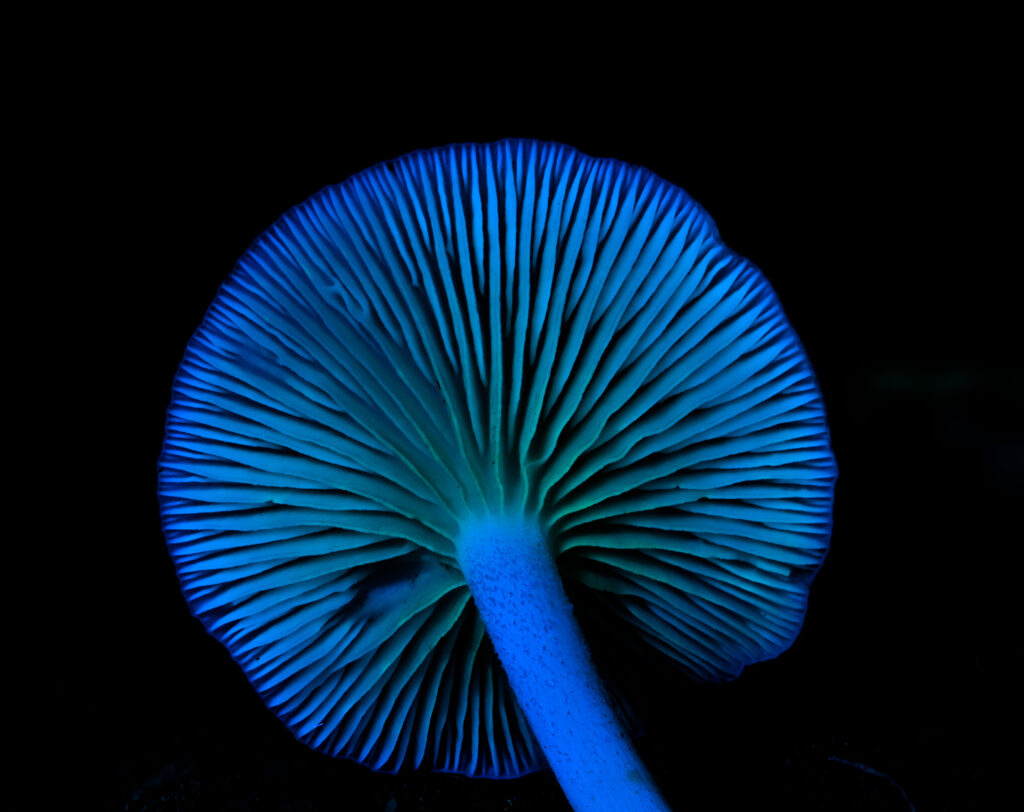
Another fascinating possibility involves symbiotic relationships between dinosaurs and bioluminescent fungi or bacteria. Modern examples of such relationships exist, such as certain deep-sea fish that host bioluminescent bacteria in specialized organs. Some researchers propose that certain dinosaur species might have cultivated relationships with light-producing microorganisms on their skin, feathers or in specialized bodily cavities. The Foxfire phenomenon, where decaying wood glows due to bioluminescent fungi, has been documented for thousands of years and would have occurred in dinosaur-era forests as well. Dinosaurs might have evolved behaviors to take advantage of these natural light sources or even developed symbiotic relationships with the organisms responsible. Though speculative, this hypothesis provides a plausible mechanism for how dinosaurs might have appeared to glow without evolving the complex biochemical pathways required for true bioluminescence themselves.
Avian Dinosaurs and Modern Bird Connections
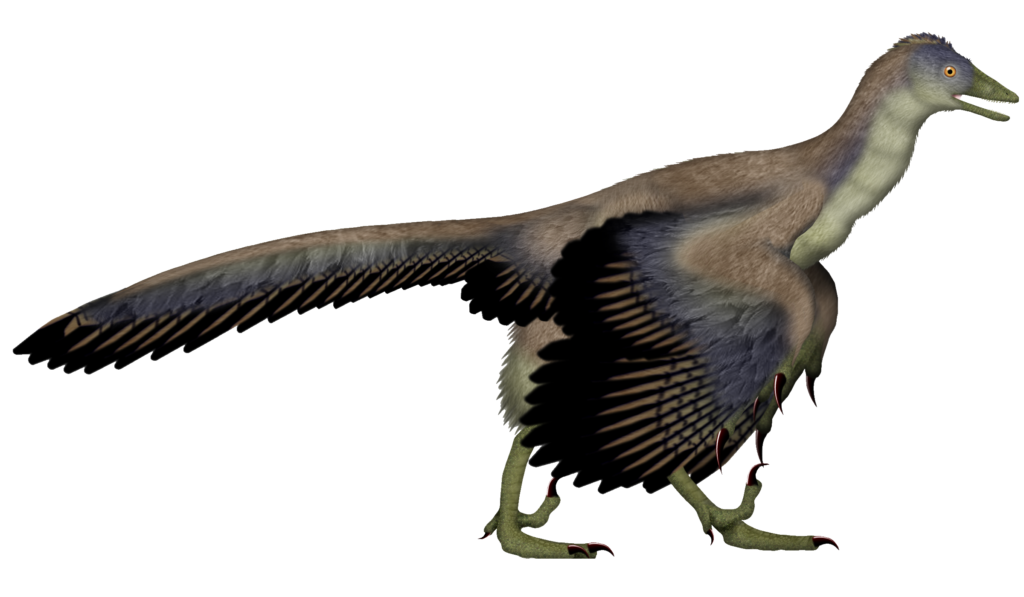
Birds, as direct descendants of theropod dinosaurs, provide another avenue for investigating potential bioluminescence in dinosaurs. While no modern birds are truly bioluminescent, several species possess highly reflective or fluorescent features that become prominently visible under certain light conditions. The papuan frogmouth, for example, has a reflective eyeshine that creates an eerie glow, while some parrot species have fluorescent feathers that glow under ultraviolet light. These traits in modern avian dinosaurs suggest similar capabilities might have existed in their non-avian dinosaur ancestors. The evolutionary continuity between non-avian dinosaurs and birds allows scientists to make reasonable inferences about prehistoric traits based on those observed in modern species. Genetic analysis of light-reactive proteins in modern birds could potentially reveal ancient genetic foundations for light-producing or light-reactive features that originated in their dinosaur ancestors.
Marine and Aquatic Dinosaur Possibilities

Marine and aquatic environments host the greatest diversity of bioluminescent species today, suggesting that dinosaurs that adapted to these habitats might have been more likely to evolve light-producing capabilities. While not true dinosaurs, the marine reptiles like plesiosaurs and mosasaurs that lived alongside dinosaurs inhabited environments where bioluminescence would have been particularly advantageous. Even semi-aquatic dinosaurs like Spinosaurus, which recent evidence suggests spent significant time in water, might have benefited from bioluminescent features for underwater hunting or navigation. Deep water environments, with their perpetual darkness, create strong evolutionary pressure for bioluminescent adaptations. The absence of preserved soft tissues from these creatures makes it impossible to confirm such adaptations, but the ecological context makes them reasonable candidates for light-producing capabilities. Some paleontologists theorize that certain aquatic or semi-aquatic dinosaurs might have evolved light-producing organs similar to those found in modern deep-sea predators.
Bioluminescence for Communication and Display
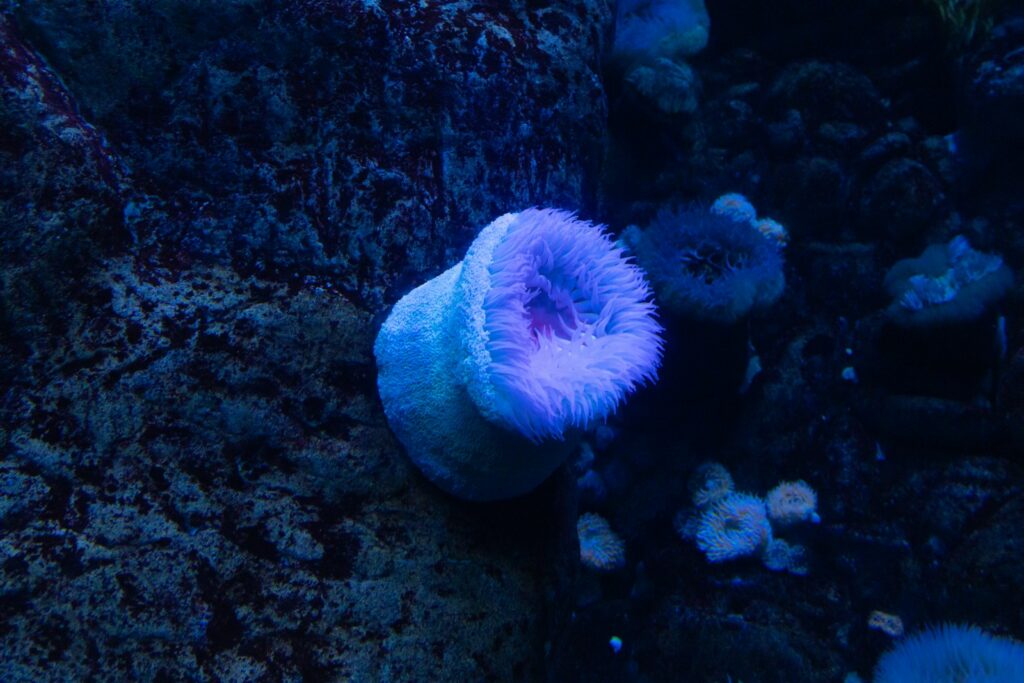
Communication represents one of the most common functions of bioluminescence in modern animals, suggesting similar applications could have existed among dinosaurs. Many dinosaur species had elaborate crests, frills, and display structures that paleontologists believe played roles in species recognition and mating displays. Imagine a Parasaurolophus with a glowing hollow crest or a Dilophosaurus whose dual crests illuminated during mating season—such bioluminescent features would have created spectacular visual signals. In dimly lit environments like dense forests or during twilight hours, light-producing anatomical features would have been particularly effective for communication. Some dinosaurs might have used bioluminescent signals to coordinate group movements or warn others of danger, similar to how fireflies use light patterns for communication today. The social complexity observed in many dinosaur species through fossil evidence suggests sophisticated communication systems likely existed, potentially including visual signals enhanced or created through bioluminescence.
Challenges in Detecting Bioluminescence in Fossils
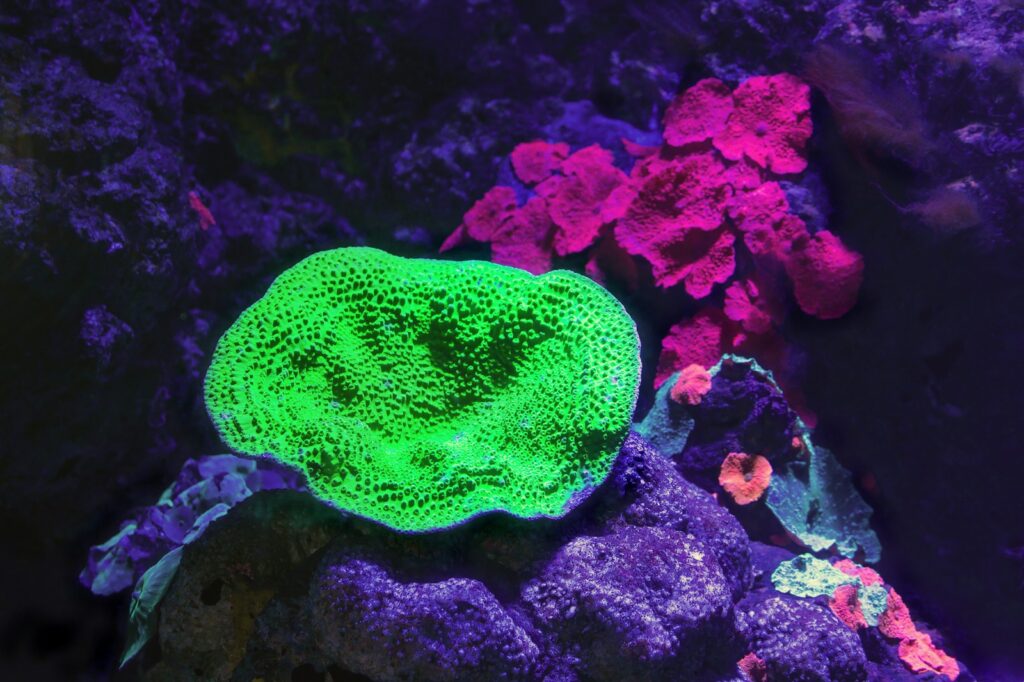
The biochemical compounds and soft tissues required for bioluminescence rarely survive the fossilization process, creating significant challenges for scientists seeking direct evidence. Luciferin and luciferase, the principal compounds involved in light production, decompose rapidly after death and leave no trace in the fossil record. Even specialized anatomical structures that might have housed bioluminescent organs are difficult to identify with certainty in fossilized remains. Paleontologists must rely on indirect evidence, comparative anatomy, and evolutionary reasoning to assess the likelihood of bioluminescence in extinct species. Modern imaging techniques like scanning electron microscopy and synchrotron radiation have improved our ability to detect subtly preserved features in fossils, but even these advanced methods cannot directly confirm the presence of light-producing capabilities. This investigative limitation means that the question of bioluminescent dinosaurs remains largely theoretical, requiring interdisciplinary approaches combining paleontology, chemistry, and comparative biology.
Future Research Directions

The question of bioluminescent dinosaurs continues to inspire new research approaches and methodologies. Advances in ancient DNA recovery and analysis might eventually reveal genetic markers associated with light production in well-preserved dinosaur specimens. Paleontologists are increasingly examining dinosaur fossils using ultraviolet light to reveal patterns and structures not visible under normal light conditions, potentially uncovering evidence of fluorescent properties. Comparative studies of light-producing mechanisms across modern species can help establish evolutionary patterns that might apply to dinosaur lineages. The mathematical modeling of dinosaur ecosystems, particularly focusing on nocturnal niches, could identify species most likely to have benefited from bioluminescent adaptations. As imaging technology continues to advance, researchers may detect previously overlooked anatomical features in existing fossils that could support or refute hypotheses about light-producing dinosaurs. The interdisciplinary nature of this question ensures it will remain an active area of scientific inquiry for years to come.
Conclusion: Illuminating Prehistoric Possibilities

While definitive evidence of bioluminescent dinosaurs remains elusive, the possibility cannot be dismissed based on current scientific understanding. The widespread evolution of bioluminescence across the animal kingdom, combined with the diverse ecological niches occupied by dinosaurs during their long evolutionary history, creates plausible scenarios for light-producing dinosaur species. Whether through direct bioluminescent capabilities, fluorescent features, or symbiotic relationships with light-producing microorganisms, some dinosaurs may indeed have glowed in the dark. This fascinating question reminds us that our understanding of prehistoric life continues to evolve with discoveries and analytical approaches. The image of glowing dinosaurs moving through ancient forests or signaling to potential mates with luminous displays may be more than just science fiction—it could represent another extraordinary chapter in the remarkable evolutionary story of dinosaurs. As paleontological methods continue to advance, future discoveries may one day shed definitive light on this captivating possibility.




